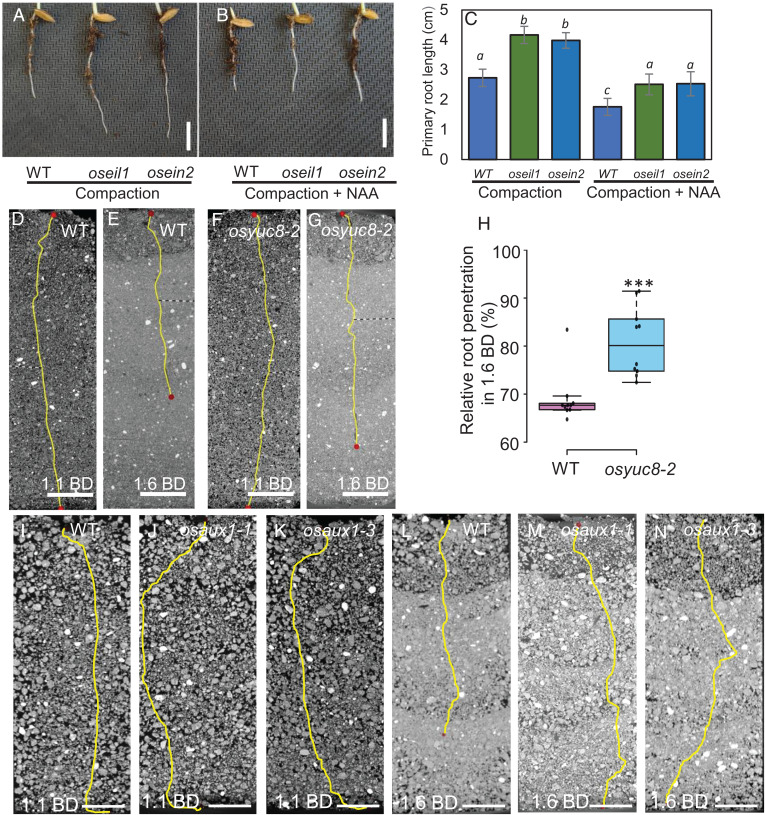Fig. 5.
Mutations in OsYUC8 and osaux1 confer higher penetration of rice primary roots in compacted soil. (A–C) Phenotypes of wild-type (WT; cv. Nipponbare) and oseil1 and osein2 mutant roots grown in compacted soil (1.6 g cm−3 BD) without (A) and with (B) addition of 100 nM NAA (synthetic auxin analog) and their corresponding primary root lengths (C). Scale bars represent 1 cm. Data are means ± SD, n = 10. Different letters indicate significant differences (P < 0.01, Student’s t test), comparing oseil1 and osein2 root lengths in compacted conditions without and with NAA treatment to the respective wild-type values. (D–G) Representative CT images of (D, E) wild-type (WT; cv. Hwayoung and (F, G) yuc8-2 (auxin biosynthesis mutant) primary root length in noncompacted (1.1 g cm−3 BD) and compacted (1.6 g cm−3 BD) soil. (H) Box plot showing root penetration ability of wild-type and Osyuc8-2, mutant in compacted soil (1.6 g cm−3 BD) expressed as % of root growth in noncompacted (1.1 g cm−3 BD) soil. This experiment was repeated three times and the final experiment was performed using CT imaging. *** represent P values of ≤ 0.0005, calculated by Student’s t- test. Scale bars in D–G represent 15 mm. (I–N) Representative CT images of wild-type (cv. Dongjin) and osaux1-1, osaux1-3 mutants (auxin influx carrier mutant alleles) grown in noncompacted (I–K) (1.1 g cm−3 BD) and (L–N) compacted (1.6 g cm−3 BD) soil. Scale bars represent 10 mm.

